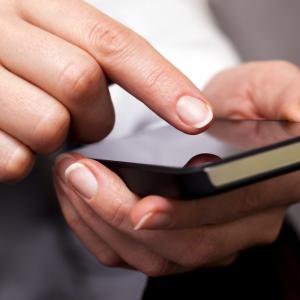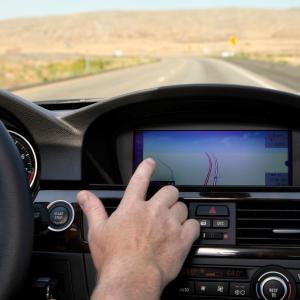Announcements
No announcements yet.

Like many great ideas, ours was born of a problem. When I was a graduate student at MIT, I sat next to a classmate who is visually impaired. He would whisper to me to ask the time, even though he wore a watch — which prompted me to wonder how the blind tell time.
I later learned from my classmate that he had a talking watch that announced the time out loud when he pressed a button, but he rarely used it in public because he found it disruptive and embarrassing. After that conversation with my classmate, I went home and Googled “watch for the blind”. I couldn’t believe what I saw.
The only options for the visually impaired were the disruptive talking watch that my classmate had told me about and a tactile watch that required users to lift the face and touch the hands to read time. The latter option, I learned, was fairly fragile, and users could easily displace the hands.
I was shocked. Here we are in the 21st century, and we don’t have a product that makes it easy for everyone to tell time! Clocks and timepieces are all around us — from the microwave in your kitchen to the smartphone in your back pocket — but the digital display still fails to address one basic issue: We have to look at it.
Telling time, then, requires sight.
Our Methodology
I became determined to solve this problem. I began experimenting with prototypes, then brought those prototypes to users for feedback on how to improve the design.
This section explains the process we took, from concept to Kickstarter. We’ll go through our initial prototyping process, then explain how user testing transformed the way we approached the design, and conclude by detailing how we developed the final product.
Our First Prototype
When I set out on this mission, I knew I needed to get feedback from users as early as possible. As soon as I had the design on paper, I looked for user groups. But I quickly learned that the traditional approach to research and development — using a drawing or video demo to solicit user feedback — was impossible for this project. Because our target users are blind, we had to make the product and take it to them.
We also knew that we needed to take a different approach than designers who had come before us, because the fragile hands that have been used on timepieces for the blind can easily be moved out of place. We began experimenting with ball bearings as indicators, held in place with magnets.
Our first prototype was about as simple as you can get and was made of the last material you’d expect: Legos. We used fewer than 20 Lego pieces, plus small magnets and two ball bearings. We brought that to user groups — more on that process below — and once we confirmed positive feedback on our concept design, we refined the prototypes by printing parts with laser-cutters and 3-D printers.
URL
http://uxdesign.smashingmagazine.com/2013/10/01/how-your-product-can-benefit-from-user-feedback/Most Recent Articles
- Oct 2, 2013 Dear Web Font Providers by Administrator
- Sep 30, 2011 An Unusual Group of Student Journalists Steps Up by Administrator
- Sep 30, 2011 Three fundamental reasons to create a web directory by Administrator
Popular Articles

Giovanna Casotto is next to Ilona Staller(Cicciolina) one of Italy's most popular TV actrices, but she also is an comic art artist, already auteur...
3912 Views

This article is dedicated as a coaching guide to provide Internet users with information on the fast Internet broadband access available today and...
2743 Views

Front end web developers hold a great responsibility to craft pixel-perfect layouts that run properly in all web browsers. Over time this has...
1910 Views

There is no incentive for people to submit their web sites to the web directory, unless it is SEF directory. Why is that so? Really? How one can...
1745 Views

If you've never heard of VoIP, get ready to change the way you think about long-distance phone calls. VoIP, or Voice over Internet Protocol, is a...
1588 Views





